The history of coal smoke in Pittsburgh is one of the most well-known examples of environmental pollution in American history.
At its height, the smoke produced by the city’s industries was so thick that it was said to block out the sun. The scale of the problem is revealed in these pictures from the Smoke Control Lantern Slide Collection at the archives of the University of Pittsburgh.
The smoke, which lasted for decades, had a significant impact on the health and quality of life of Pittsburgh’s residents, as well as on the environment.
The problem began in the late 19th century when Pittsburgh emerged as one of the world’s leading industrial centers.
The city’s steel mills and factories burned massive amounts of coal to power their operations, producing huge amounts of smoke and other pollutants. By 1816, the year Pittsburgh was incorporated as a city, it was already known for being constantly covered in a thick fog of coal dust.
In 1883, travel writer Willard Glazer wrote: “In truth, Pittsburgh is a smoky, dismal city at her best. At her worst, nothing darker, dingier, or more dispiriting can be imagined.”
Herbert Spencer, the great British philosopher, who was brought to Pittsburgh by his admirer Andrew Carnegie, put it more succinctly: “Six months’ residence in Pittsburgh would justify suicide.”
 The issue of burning coal and producing smoke has long been a complex matter here because, for many people, smoke meant progress. When were the steel mills not smoking? They were not smoking during economic depressions.
The issue of burning coal and producing smoke has long been a complex matter here because, for many people, smoke meant progress. When were the steel mills not smoking? They were not smoking during economic depressions.
Of course, the smoke had many devastating effects on the city and the way people lived. Some of the most famous were the conditions downtown at midday when street lights had to be turned on.
The vegetation around the city was also affected; in contrast to the very green city of today, before smoke-control many of the hills were completely denuded by the fumes. The city had acid rain before they even invented the term.
Efforts to address the problem of coal smoke in Pittsburgh began in the early 20th century, as public awareness of the issue grew.
In 1911, the city passed its first air pollution control ordinance, which required industries to reduce their smoke emissions.
This was followed by a series of other regulations and initiatives aimed at curbing pollution, including the creation of the Allegheny County Health Department in 1924.

Cars are parked on the Monongahela Wharf under an overpass enveloped in smoke.
Despite these efforts, the problem persisted for several more decades. In 1941, influenced by a similar policy introduced in St. Louis four years earlier, the city of Pittsburgh passed a law designed to reduce coal production in pursuit of cleaner air.
Not willing to cripple such an important part of the local economy, it promised to clean the air by using treated local coal. The new policy ended up not being fully enacted until after World War II.
Eventually, natural gas was piped into the city. This provoked a rapid changeover: between 1945 and 1950, more than half of Pittsburgh’s households switched from coal to natural gas.
Another major technological change that occurred around this time was the shift from coal-burning locomotives to diesel-electric.
In 1950, the United States had 35,000 coal-burning locomotives; by 1954, there were 350. This was one of the most rapid technological transformations in United States history, and of course it too made a big difference in Pittsburgh and around the nation in regard to air quality.
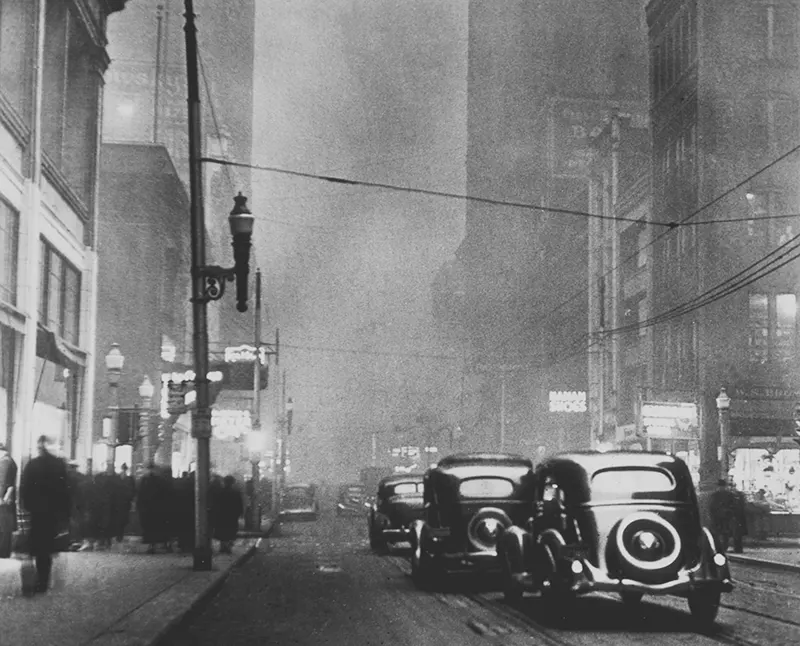
Street-level traffic scene with pedestrians and tram lines in smoky midday darkness.

Dense smoke obscures a bridge and distant buildings.

The Koppers Coal and Gulf Oil buildings in the daytime with heavy smoke. The picture is taken from ground-level looking up at the buildings.

Two men stand near traffic under a bridge while a third man leans over a car. The sun can be seen through the clouds of smoke at the top of the image.
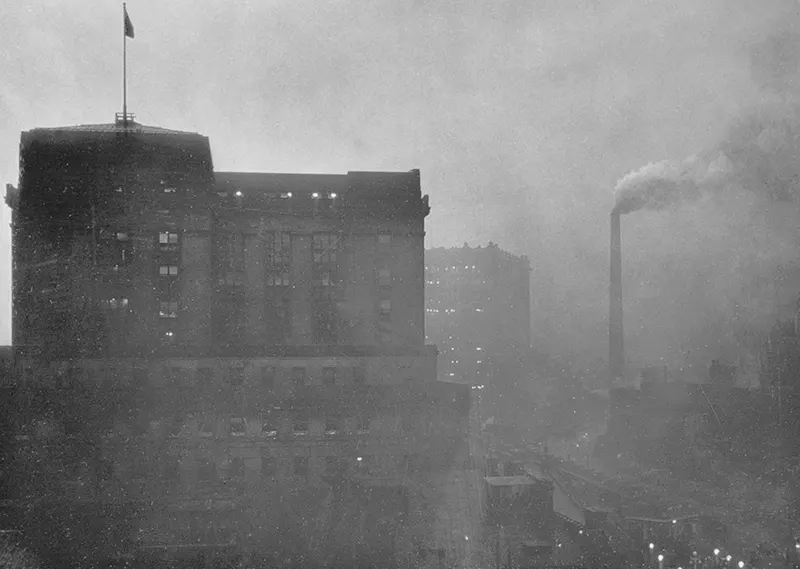
This picture shows a factory chimney spewing out smoke in the city, adding to Pittsburgh’s intense air pollution problem which was once so bad the midday sun could be blocked out
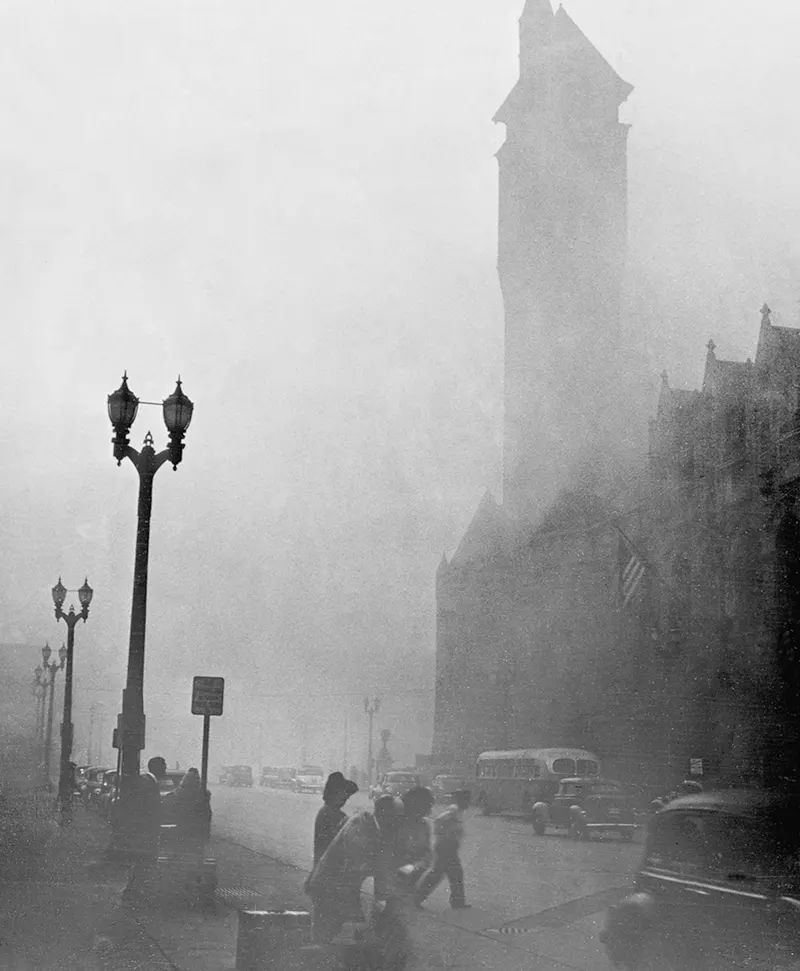
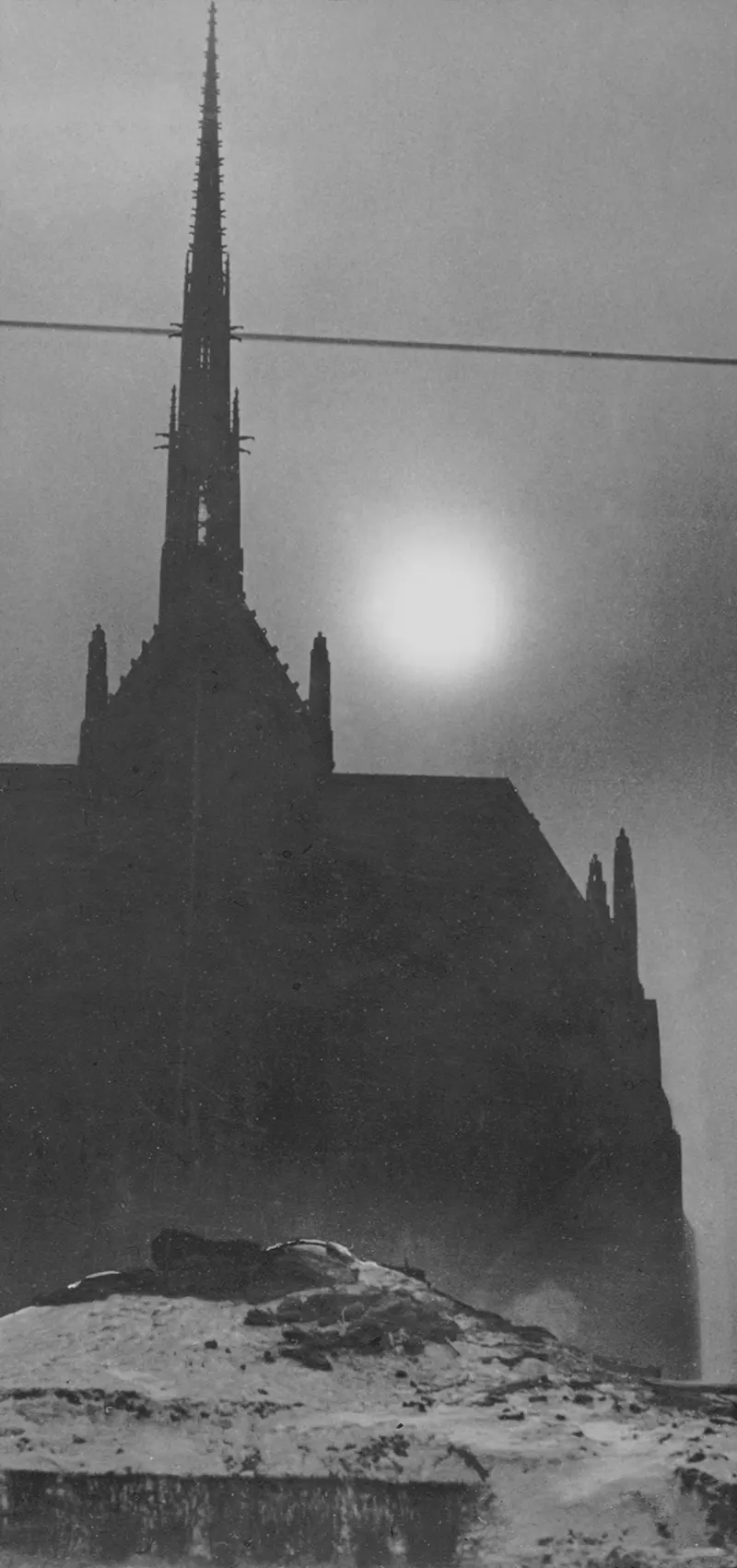
The sun is visible through thick smoke beside a silhouetted church steeple.

A man in a hat stands silhouetted against a traffic scene and a large structure. The photograph is taken from within the Pennsylvanian looking towards Downtown and Liberty Avenue.

Dense smoke obscures a church steeple with the sun barely visible through the darkness.
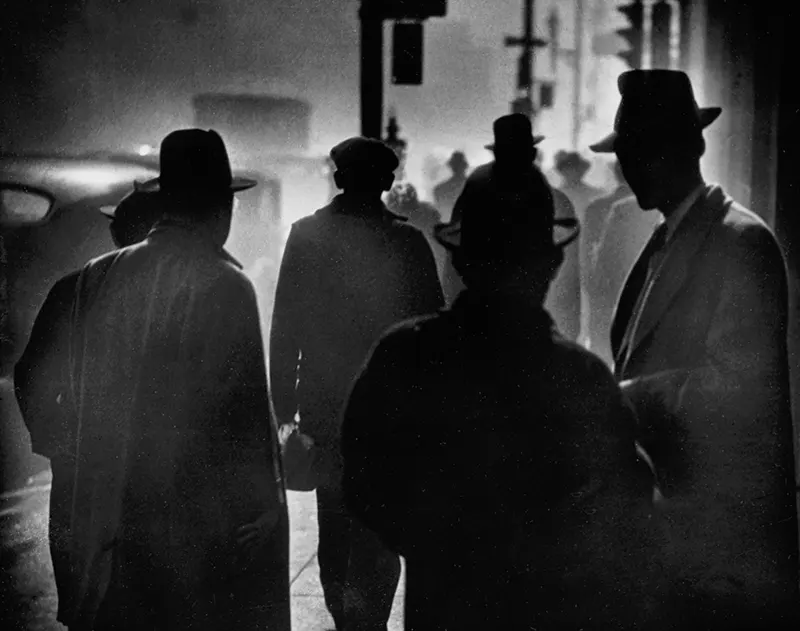

Two businessmen standing on the corner of Liberty and Fifth Avenues smoking cigarettes. Also shows the Trick Store and Roger’s Jewelry sign with traffic and other businesses visible in the background.

600 block of Liberty Avenue with light smoke from in front of Harris Department Store; also shows Loftis, Meyer Jonasson & Co., Rosenbaum’s, Palace Credit Clothing, and King’s Suits. Heavy traffic fills the street.

Above street-level view of the corner of Liberty and Fifth Avenues with clock in frame, taken at 10:55 AM. The Lubin & Smalley Florist shop, MacDonald’s Candy store, and Standard Typewriter Co. signs are featured. All buildings and businesses in the image have their lights on.

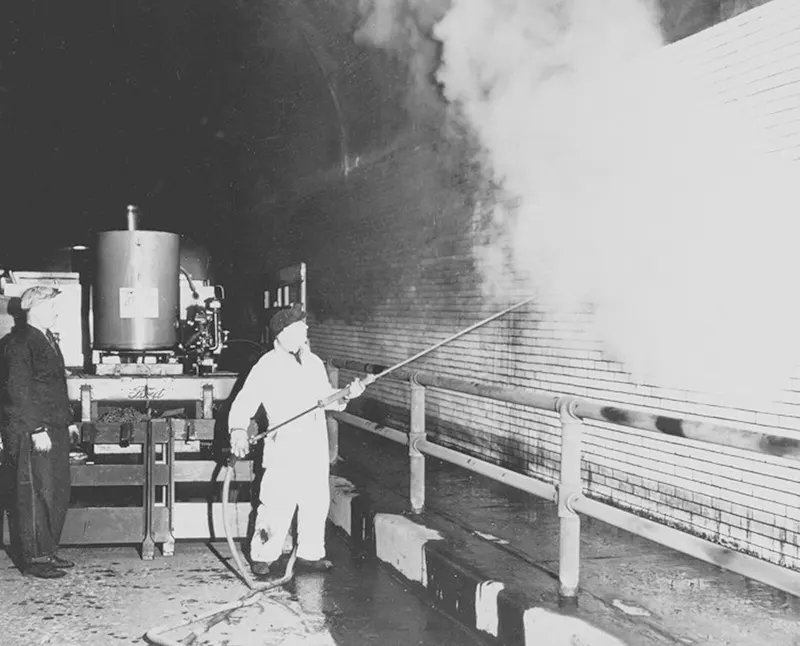
Workmen cleaning soot off of bricks with Ford truck in background. A cleaning machine on the back of the truck has the “Jenny” logo on the front, and grime from the bricks can be seen spreading on the ground. One worker is wearing a light-colored jumpsuit, and the other is wearing a dark jumpsuit.
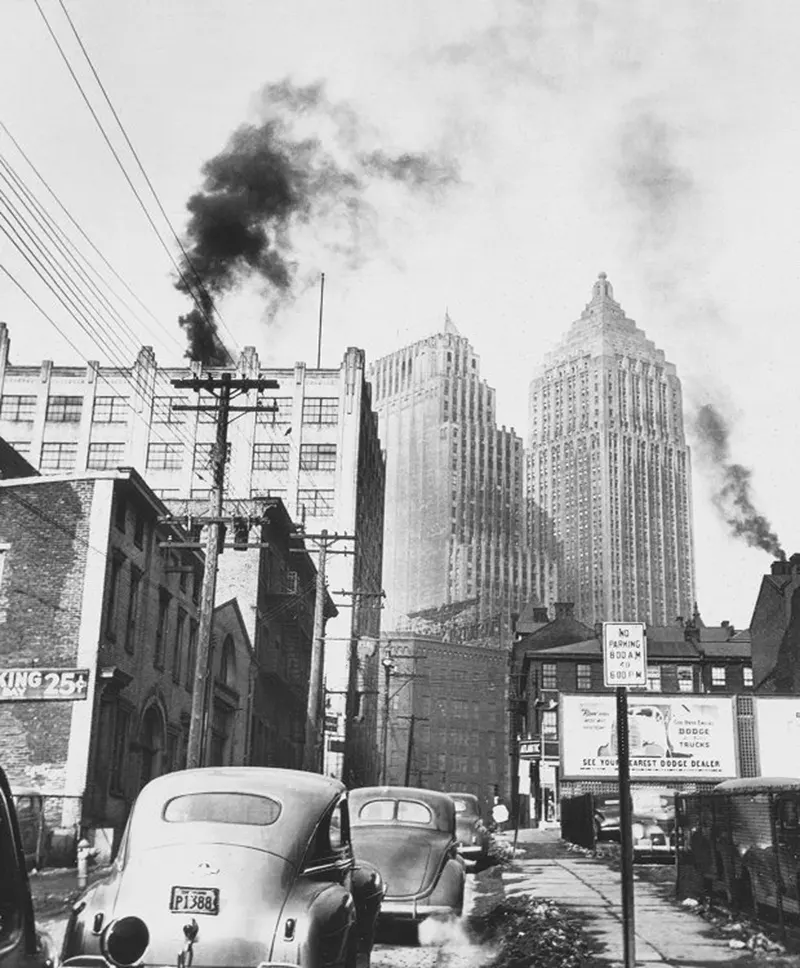
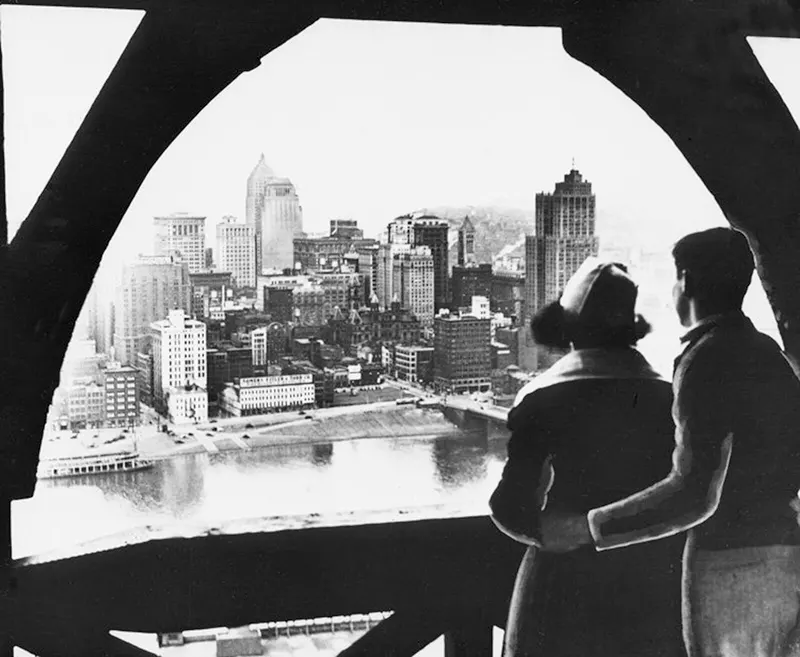
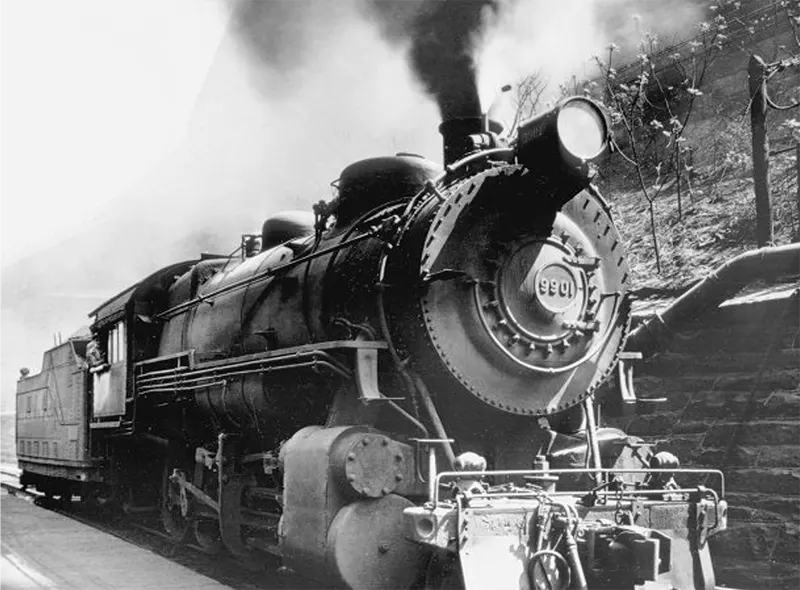
team locomotive Engine #9901 of the Pennsylvania Railroad shown expelling a plume of dark smoke at a railway station on a sunny day.
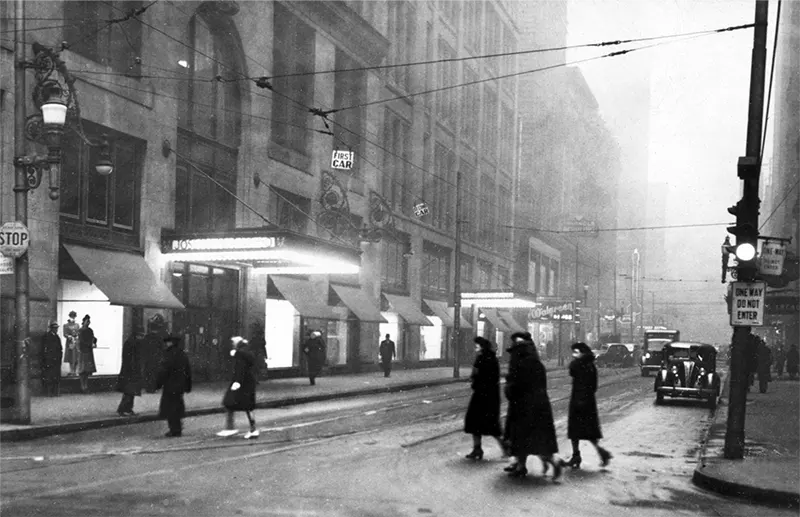
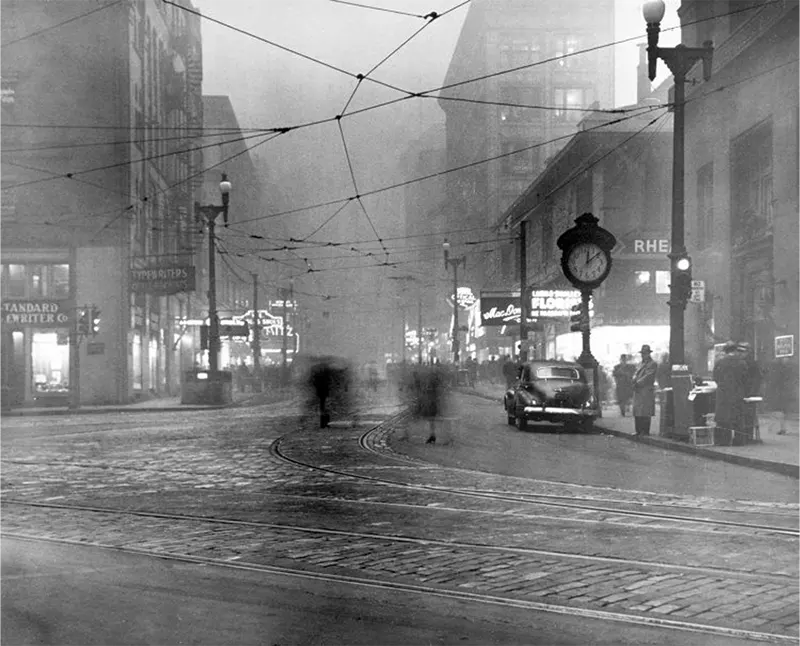
The smog which engulfed Pittsburgh for decades was initially thought to be good for crops and a proud symbol of the city’s industrial progress and energy.
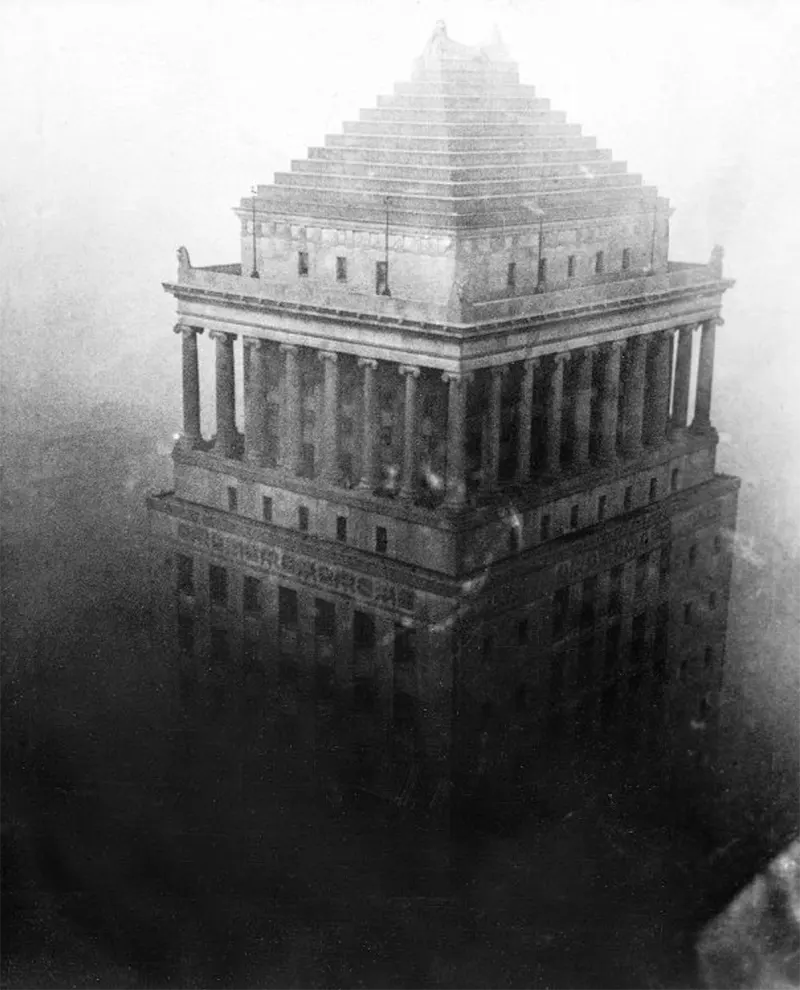
The Saint Louis Civil Courts Building before smoke ordinance from an aerial perspective. Heavy smoke obscures the lower portion of the building. The remarkable success of the Saint Louis smoke control program made a strong impression on Pittsburgh, a city confronted with similar air pollution problems.

One man is cleaning the outside of the Allegheny County Courthouse and Jail while another man smokes a cigarette and looks at the Jenny cleaning machine. A small dirty patch of the courthouse can be seen near the worker.

Street-level view of the North end of the Liberty Tunnels and Allegheny County Police Traffic Division with two officers. There is heavy smoke partially obscuring the background. Cars can be seen exiting the tunnel.
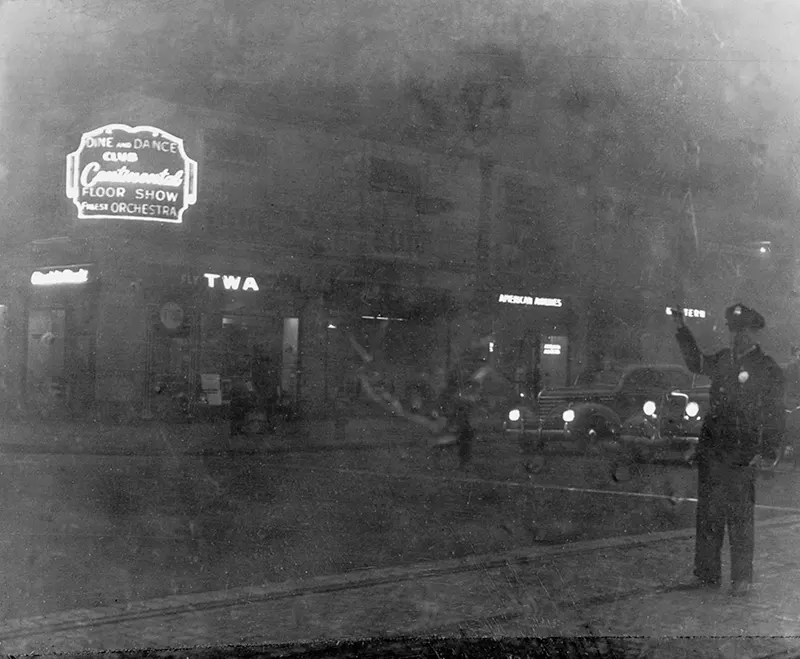
Saint Louis city street seen before smoke ordinance, featuring the Club Continental, TWA sign, American Airlines sign, and police officer directing traffic. The remarkable success of the Saint Louis smoke control program made a strong impression on Pittsburgh, a city confronted with similar air pollution problems. Pittsburgh drew directly from this project to justify and foster its own environmental regeneration.
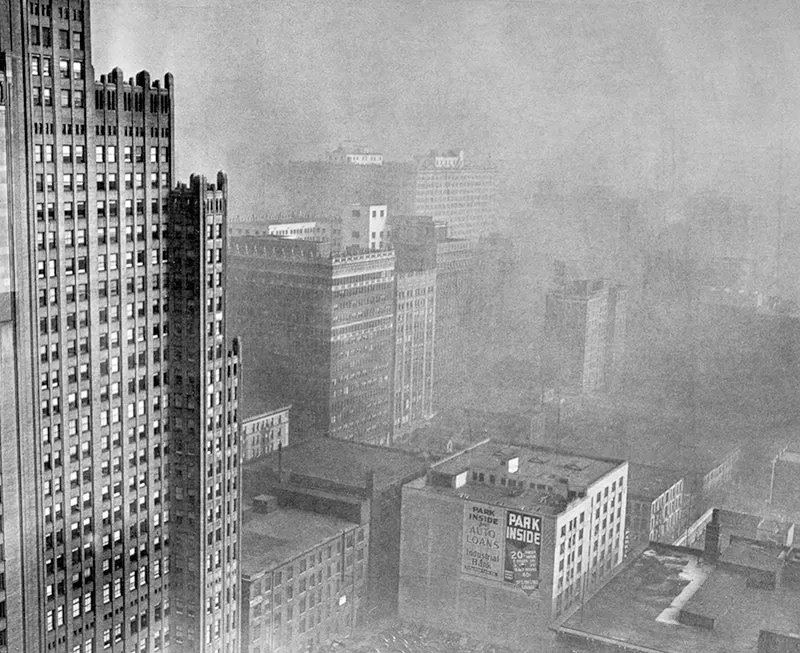
View of St. Louis and the Art Deco building and the Southwestern Bell Telephone Building. This image was taken as part of a smoke investigation study for Pittsburgh smoke control.
Today, Pittsburgh’s air quality has improved significantly, and the city is no longer plagued by the thick clouds of smoke that once characterized it.
However, the legacy of coal smoke pollution is still felt in the city, and efforts to address the issue continue.
These include initiatives aimed at reducing emissions from cars and other sources, as well as ongoing efforts to clean up the city’s waterways and restore its natural habitats.